Your 2026 Power Bill
2026 Residential Rates
In the first half of 2025, OPALCO did a rate study to ensure the way OPALCO bills co-op members is fair and fits with cooperative principles. After being presented with the results, the OPALCO board of directors decided to make some changes to OPALCO’s rate structure. This will result in several changes to member bills in 2026.
The chart below shows an overview of the changes on a power bill for an average residential member that uses 1,000 kWh/month.
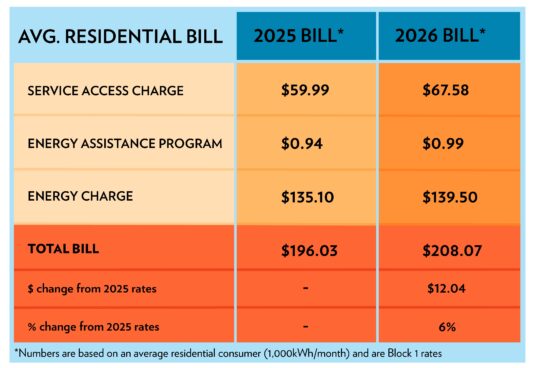
The 2026 rate study determined that increasing the fixed rate ensures that ALL customers, including part time and seasonal users fairly contribute to the fixed infrastructure costs of the co-op and supports the financial health of the co-op.
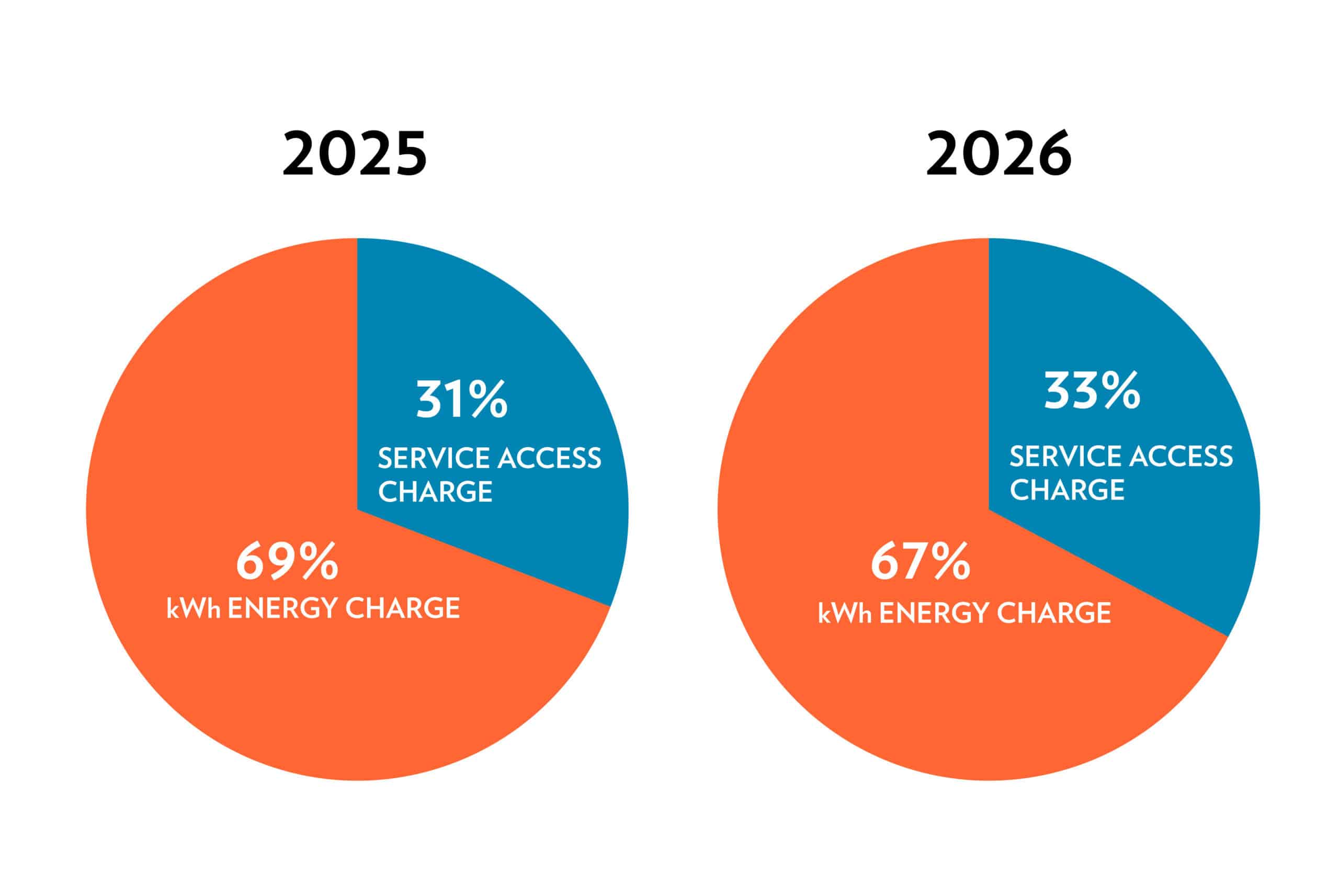
OPALCO Rates 2026
Here is a summary of all the changes as approved by the OPALCO Board for 2026:

Increased Service Access Charge and Reduced kWh Charges
Right now, most of OPALCO’s revenue comes from the per-kWh charge. The study showed it’s fairer to spread more costs into the fixed monthly charge. For residential members, you will likely see a 5.8% rate increase for your overall monthly bill (average ~$12/month) with the increase higher in your service access charge ($67.58/month) than kWh charge ($0.1395 per kWh).
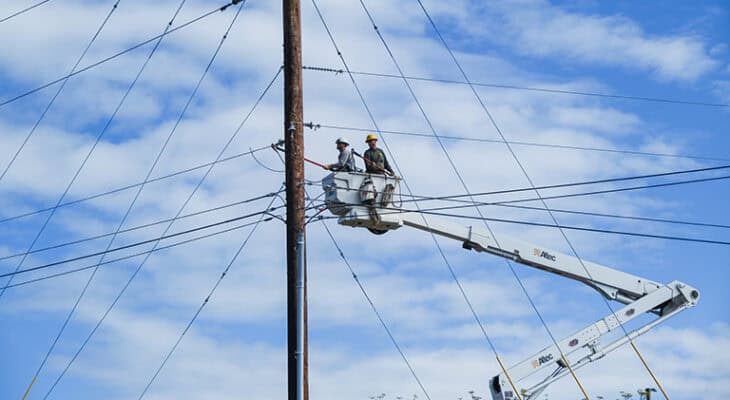
Service Access Charge Breakouts
The back of your bill will now show how the fixed monthly service charge is used. It covers important areas like linecrew and system maintenance (34%), grid infrastructure such as submarine cables (33%), and business costs like accounting, billing, marketing, insurance, and IT (33%). This breakout of expenses refers ONLY to a portion of OPALCO’s fixed expenses covered by the service access charge. It does not include other fixed expenses or variable expenses.
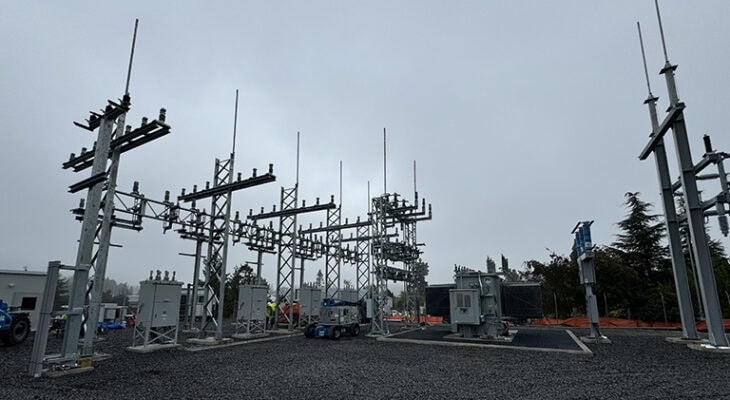
Energy Charge Adjustment
Instead of being tied only to power costs, the “energy charge adjustment” will reflect OPALCO’s overall operating margin. This change helps protect members from big swings in power prices, inflation, or other expenses.
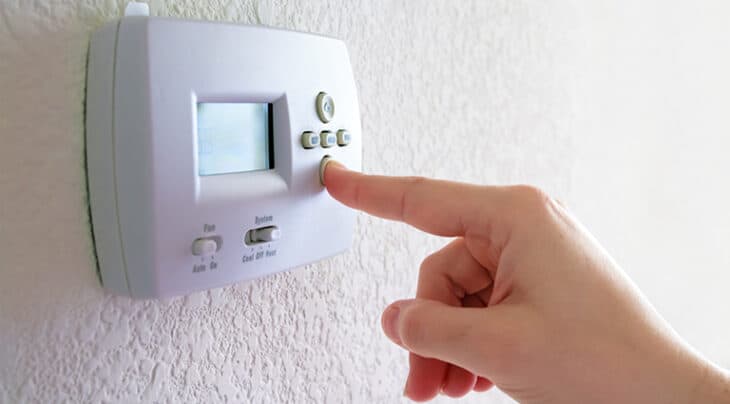
Demand Charge
Bills will include a new line showing your highest energy use in the month (your “peak demand”). For now, this is just information—no extra charges will be added in 2026.
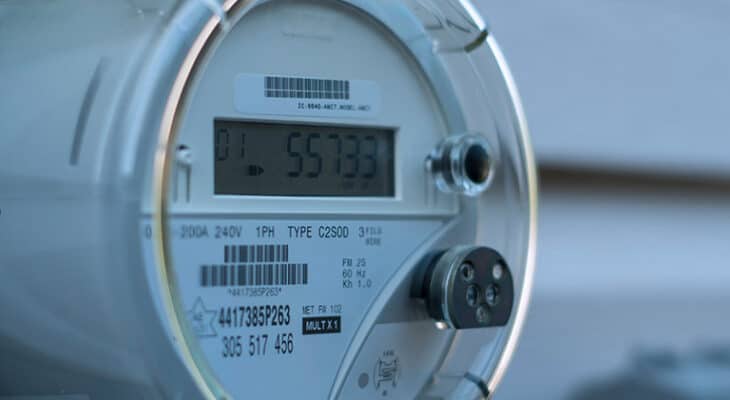
Fee for Large Residential Services
Most homes won’t see a change, but if you have a larger-than-standard meter, there will be a small monthly fee ($10 for 400-amp service, $20 for 600-amp or more).
Looking for some more information? Check out the recording of the 2026 Rates Q&A that OPALCO hosted to hear a brief presentation about the rate changes from General Manager Foster Hildreth. Additionally, hear the questions members had for the team.
Frequently Asked Questions
A rate study is a detailed analysis to ensure the way that OPALCO bills the membership is fair and fits with the cooperative principles. As a nonprofit electric co-op, OPALCO is a cost-of-service organization, meaning we only collect as much money as is needed to cover our business costs. Any extra money collected is returned to members via capital credits.
A cost-of-service-analysis (COSA), determines how much it costs to provide service to each member class (e.g., residential, commercial). The results of a COSA guide the development of equitable and cost-based utility rates.
Since the last study there has been a shift in energy usage – there is more residential load and less commercial. This means that commercial members are now subsidizing the residential member class. The COSA methodology for cost categories was shifted to better align with standard practices. Based on this, it was suggested that the residential rate could be modified to better cover costs and improve revenue certainty which will more fairly recover costs. A residential demand charge could recover these costs while limiting adverse effects to small energy users, or OPALCO could increase the monthly fixed charge. OPALCO’s current infrastructure does not support demand charges for residential users, so this change would have to be implemented at a later date, if the team decides to move forward with demand charges.
Rate designs have a variety of trade-offs. A few key principles play an important role, including:
- Recovery of total revenue requirement, making sure OPALCO can cover all its costs
- Fair allocations of costs among members
- Price signals that encourage efficient use
- Easy to understand by members
- Practical and cost-effective
- Rate and bill stability
- Energy affordability for low-income members
- Support for electrification efforts as members move away from carbon-based fuels
The energy market is always changing—the current change is driven primarily by the efforts to transition to renewable energy. Factors to consider include:
- Clean energy is not available at certain hours throughout the year.
- It is a priority in our region to switch to electricity rather than using carbon-based fuels for heating and transportation.
- Charging more for using more energy is a barrier to achieving electrification goals.
- Price signals and covering high fixed costs are part of a renewable energy future.
Factors that are unique to OPALCO are low-cost power from the Bonneville Power Administration, costly submarine cables, limited year-round solar resources yet high rooftop solar adoption, large hydro resources mean there is not much value in energy load shifting within any given day, and large share of seasonal homeowners who are gone when OPALCO recovers most of the revenues in winter months.
Demand charges are added to bills based on a member’s peak demand. It reflects the maximum amount of power a member uses at any one time during a billing period.
This fee will be based on meter size. Most residential users have a 200-amp meter. For anyone above this, they will accrue a monthly fee: $10 per month for 400-amp services and $20 per month for meters larger 600-amps.
Clean energy is not available at certain hours throughout the year such as the nighttime and when the wind isn’t blowing which could mean that electricity prices go up during those times.
It is a priority in our region to switch to electricity rather than using carbon-based fuels for heating and transportation. Charging more for using more energy is a barrier to achieving electrification goals.
Price signals and covering high fixed costs are part of a renewable energy future.
The future rate design needs to ensure all members—including seasonal and rooftop solar members—fairly contribute to the fixed costs of the grid, support the financial health of the utility including during warm winters when sales are low, and maintain affordability for low-income customers.
OPALCO has two energy assistance programs that members can access. Energy assist is a monthly bill credit and Project Pal is a one-time grant offered to members who need it during the winter months.
Here is a link to the Energy Assistance Program: https://www.opalco.com/account-services/energy-assist-program/.
Here is a link to the Project Pal Program: https://www.opalco.com/account-services/project-pal/.
Costs are going up and with that our rates need to go up. Every expense is carefully considered each year to ensure we are making best use of member resources. The main reason rates are going up are inflation, the rising costs of power and labor, and to manage the Co-op’s equity position. As a nonprofit electric cooperative, we use equity to borrow federal funds to build essential capital projects, like the multiple submarine cable replacements that are scheduled over the next 10-20 years. Rate increases are predicted for the next five years.
This portion of the charge relates to OPALCO’s capital equipment including high-cost submarine cables that are paid via low-interest federal loans, substations, and other capital expenses that keep the grid reliable.
This includes taxes, insurance, IT, accounting, legal, management, employee benefits, member services, billing, 24/7 outage call center, advertising, and other annual business costs.
OPALCO has a top-notch linecrew that works 24/7 in all weather conditions to keep our power up and running. This includes regular maintenance and replacement of the system to keep things working. This also includes the engineering and mapping team that designs and plans the system that serves 20 islands.
It is a priority for the OPALCO keep rates affordable for co-op members. OPALCO’s renewable energy projects like the Decatur Community Solar project have paid for by participants who buy into the project or funded by grants. This is also true for other OPALCO programs like rebates (funded by BPA), Switch It Up (USDA funds), and new service installations (paid for by the members installing the new service).
Rates continue to go up due to inflation, the rising costs of power and labor, and to manage the Co-op’s equity position. The Co-op uses equity to borrow federal funds to build essential capital projects, like the multiple submarine cable replacements that are scheduled over the next 10-20 years.
